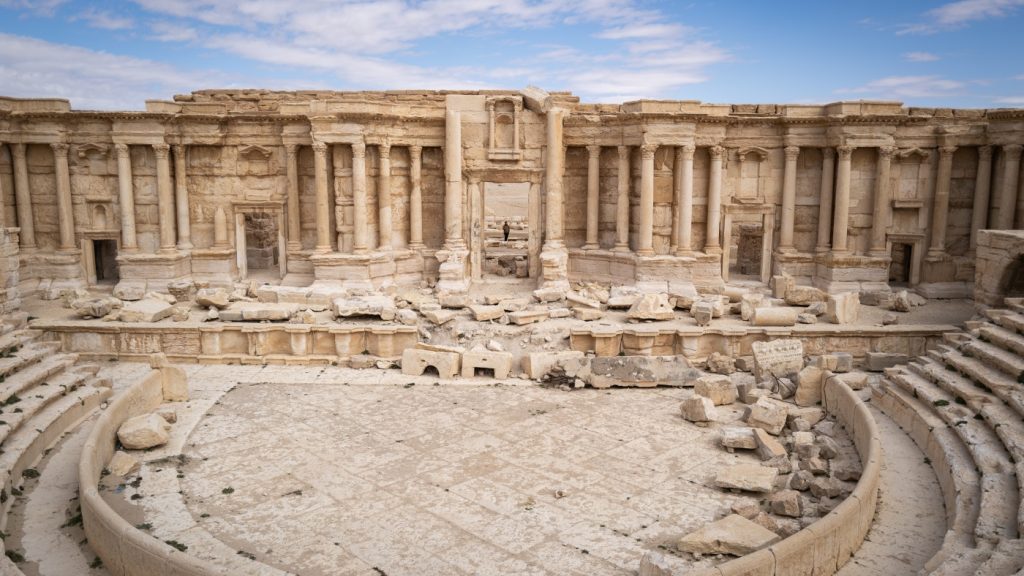Palmyra: Once a Jewel of the Silk Road
PALMYRA, Syria — The ancient city of Palmyra, recognized for its historical significance as a key stop on the Silk Road, bears the wounds of ISIS devastation and a decade-long civil war. Despite its scars, the city symbolizes the aspirations of Syrians to restore their rich archaeological heritage.
Designated as a UNESCO World Heritage Site, Palmyra was settled for millennia before flourishing as a Roman metropolis at the intersection of East and West in the 1st century CE. Today, the ancient ruins lie mostly abandoned, echoing the historic Roman city’s past grandeur.
With the recent reopening of Syria to international visitors following the ousting of Bashar al-Assad’s regime by rebel forces last December, local residents are hopeful for a resurgence in tourism. However, ongoing gunfire from Syrian government and U.S.-backed militia forces nearby serves as a stark reminder of the prevailing instability.
Destruction and Resilience
On a rainy day in late January, Mahmoud Botman, a fighter from the U.S.-supported Syrian Free Army, recounts the devastation wrought by ISIS in 2015. The militants planted explosives at the Baalshamin temple, dedicated to the Mesopotamian god of the sky, leading to its collapse and the destruction of other monumental structures. The once intact ruins of Palmyra—believed to be blasphemous by ISIS—suffered systematic attacks, including the beheading of the city’s antiquities chief, Khaled al-Assad, and the detonation of historical sites.
Local volunteers, driven by pride in their historical heritage and inspired by the powerful Queen Zenobia of the 3rd century, are actively working to protect the site. Efforts include repairing sidewalks and clearing debris from the citadel that overlooks the ancient city.
The Impact of Military Presence
The Syrian government has positioned military forces within the ancient citadel, while Russian forces established a base nearby, reportedly resulting in even greater damage than the ISIS onslaught. Critics cite that during the Russian military presence, carelessly conducted operations contributed to additional harm to Palmyra’s archaeological treasures.
As reconstruction efforts move forward, restoration will rely on international collaboration since local capacities have been severely strained by the civil conflict. The hope remains that Palmyra can reclaim its historical significance and attract tourism, which remained notably limited before the war.
Looking Ahead
The potential for rebuilding Palmyra sparks cautious optimism among its inhabitants. While enduring the visible impacts of war, they remain committed to their heritage, eager for assistance in reclaiming their past glory. As the truth of what was lost weighs heavily, the determination to restore Palmyra shines through, emblematic of the resilience born from hardship.
Reported by Greg Dixon and Sangar Khaleel from Palmyra and Damascus.



